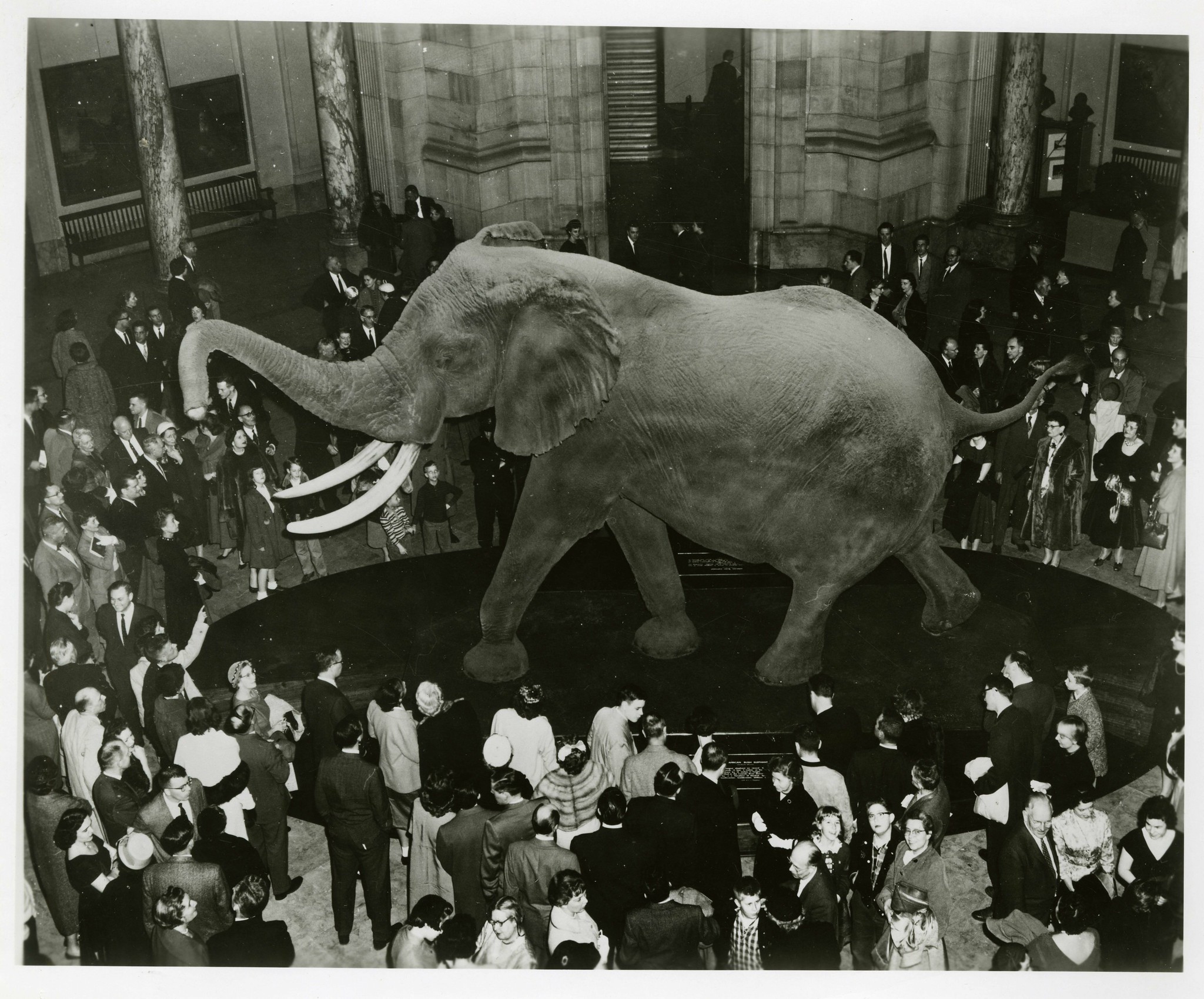Standing at 4 meters (13 feet and 2 inches) from ground to shoulder and weighing around 11 tons, “Henry” is the largest Elephant ever recorded – a true giant amongst giants. To help you get your relatively puny-sized head around this stature, he was heavier than the biggest T. rex ever unearthed and tall enough to tap the top of a double-decker bus with his trunk.
For more than six decades, Henry has stood in the Smithsonian’s National Museum of Natural History in Washington DC, but his story began far from marble halls and gift shops, in the sun-baked savannas of Africa.
Though museumgoers affectionately call him “Henry” or the “Giant of Angola”, the towering elephant’s official label is more somber: the Fénykövi Elephant. He’s named after Josef J. Fénykövi, a Hungarian-born engineer-turned-big-game-hunter who first encountered traces of the elephant in 1954. While on a rhinoceros hunt in the remote Cuíto River region of southeastern Angola, he stumbled upon the unbelievably large footprint of an African elephant (Loxodonta africana).
“Getting out a tape measure, I found it measured an even 3 feet [1 meter] in length – more than a foot larger than the world’s record trophy. As I stood up a little chill went through my body. I knew I was looking at the spoor of probably the biggest animal living on the surface of the earth,” Fénykövi wrote in 1956 for an article published by Sports Illustrated.
Obsessed with the find, Fénykövi returned the following year at the head of a specially organized expedition involving local Indigenous trackers. On November 13, 1955, after days of searching, he and his team finally confronted the near-legendary elephant and shot it dead with over a dozen high-caliber bullets.

Unveiling of “Henry the Elephant” at the Smithsonian’s National Museum of Natural History in March 1959.
However, when it came to measuring the footprint that caught his attention in the first place, it appears that Fénykövi had made a mistake.
An examination revealed that an old iron slug from a muzzle-loading flintlock rifle was lodged in the elephant’s left front leg, alongside the 16 bullets fired by Fénykövi’s team. The earlier wound had damaged the animal’s leg, causing it to take shorter steps and limp. When the elephant ran, the left hind foot often landed partly over the front footprint, creating the illusion of the track being far larger than it truly was.
Nevertheless, the remaining measurements proved that this hulking individual was indeed the largest land animal ever killed by a human.
“There the enormous elephant lay on his side, amidst the carnage of blood, broken trees, and trampled brush that had marked his last struggles. When I let my eyes roam over his vast expanse, I could hardly believe that any animal could be so big, and understood why it had taken so many heavy-caliber bullets to finish him off,” wrote Fénykövi.
“And when I got out my tape measure and stretched it to cover his huge dimensions, I knew that I had not been wrong: this was the biggest land animal ever brought down with a gun,” he continued.
The armor-like skin weighed more than 2 tons and required a truckload of salt to preserve it as it traveled by truck through hundreds of miles of wilderness to the nearest railroad at Silva Porta (modern-day Cuíto), then onto Fénykövi’s workshop in Madrid.
When the skin finally arrived in the US, taxidermists at the Smithsonian spent 16 months preparing the specimen for display and used over 4,989 kilograms (11,000 pounds) of clay for the full-scale model. By 1959, the taxidermied specimen was officially unveiled to the gazing public at the Smithsonian National Museum of Natural History in DC where he has stood – majestic yet motionless – ever since.
African bush elephants are the largest land animals alive today, and unsurprisingly, there are a few contenders for the title of the largest ever recorded. The Guinness World Records, for instance, attributes the record to another Angolan elephant shot in November 1974, estimated to have stood 3.96 meters (12 feet 11 inches) tall at the shoulder. However, there is no scientific documentation to verify that claim.
Since the museum specimen can still be seen and measured today, Henry offers some of the most credible and verifiable evidence, supporting his claim to the record.
Source Link: Meet Henry, The World's Largest Elephant Ever Recorded, Who Was Heavier Than A T. Rex